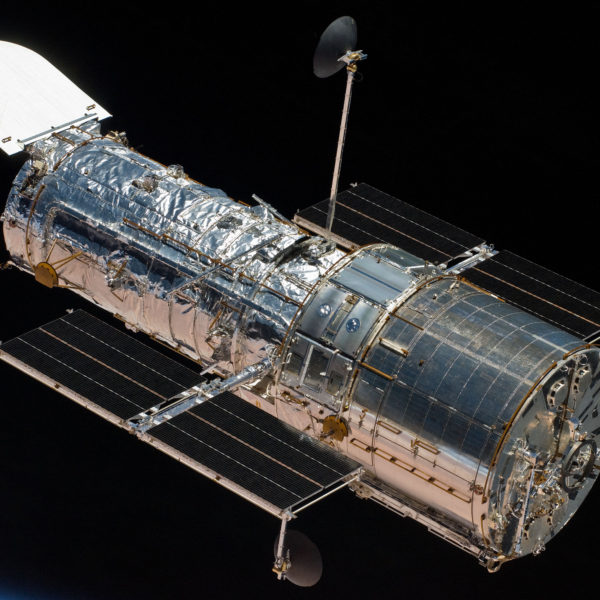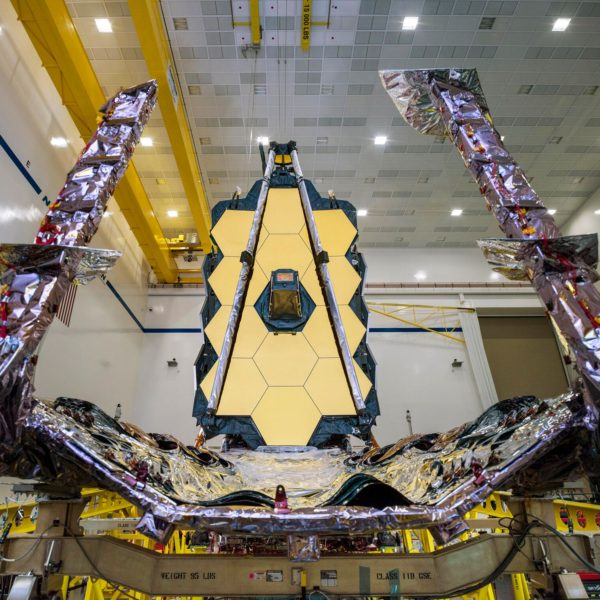A space telescope or astronomical camera is a tool for seeing the night sky and observing the movements and structure of celestial bodies in it. In addition to making celestial objects appear larger, they make their images brighter and show details on the surface of some of them. Structurally, the telescope is an optical-mechanical device whose job is to provide an accurate, clear, and vivid image of celestial bodies in space.
Many people think that Galileo invented the space telescope, but the fact is that Hans Lippershey, a Dutch lens maker, first made the telescope. Galileo was the first person in Italy to learn how to make a telescope and look at the sky with it. Until then, human knowledge of space was limited to sight and there was no means of observing the sky. Astronomers such as Galileo and Kepler used the telescope to expand the scope of human consciousness of the universe. These astronomers refuted human misconceptions about the centrality of the earth in the universe by using a space telescope.
The space telescope had become an invisible tool for astronomers in the 18th century. With the advancement of lens technology and optics, larger and better telescopes were installed in observatories. Humans now saw planets and stars that they were unaware of before the telescope was invented. With the help of a space telescope, he realized that the world was bigger than he had imagined.
With the increase in magnification and sharpness of telescope images, the scope of human knowledge of the world around it grew larger and larger. At the beginning of the twentieth century, however, most astronomers believed that the universe consisted of only one galaxy, the Milky Way, of which the solar system is a component.
In 1924, American astronomer Edwin Hubble used his 100-inch telescope to observe many galaxies outside the Milky Way. He observed that the galaxies were moving away from each other. So the world is expanding. His discovery once again shattered the boundaries of cognition of the universe, followed by the theory of the Big Bang, which is by far the best answer to the galaxies moving away.
To better observe the sky, astronomers install space telescopes in the mountains and areas free of dust and light from cities, however, to observe the sky, they must consider the weather conditions.
Types of space telescopes
Telescopes are classified into two types:
- Optical telescopes
- Radio telescopes
Optical telescopes
Optical telescopes are divided into refracting telescopes and reflecting telescopes.
-
Galileo telescope (Refracting telescope)
Magnification in these telescopes is based on a lens located in front of the telescope aperture, and the method used in them is similar to ordinary binoculars. These telescopes generally cost much more on a professional level than other models and offer better quality.
-
Newtonian telescope (reflecting telescope)
Magnification in these space telescopes is based on a concave mirror with an aluminum coating on it. The aluminum coating prevents the reflection of the mirror from oxidation. Some other telescopes use silver and then place a non-oxidizing coating on it. These telescopes are generally more affordable than other types and are widely used, especially in amateur astronomy. Newtonian space telescopes are generally long, they also need to be cleaned after a while, and then, depending on the quality of the mirror coating, they need to be renewed.
Radio telescopes
These telescopes operate in the range of radio waves and reveal a lot of data to us based on the radio waves they receive. For example, nascent stars, the sun, quasars, neutron stars, planetary storms, and so on can be seen using radio telescopes. The Milky Way galaxy has also been mapped by radio telescopes (using radio wave reflection).
Telescope power
The main characteristic of any space telescope is the diameter of its main lens or mirror. For this reason, the most important and valuable part of a telescope is its lens or main mirror. Each telescope has three different powers:
- Resolving Power
- Light Gathering Power
- Magnification power
The first two powers in any telescope are fixed and depend on the diameter of the lens or mirror, but the third power is usually variable. This power is a function of the focal length of the objective lens or the main mirror and the focal length of the ocular lens.
Telescope’s History
The idea of building and placing a space telescope beyond the Earth’s atmosphere dates back to the mid-twentieth century.
In 1923, Hermann Ebert, one of the greats of the German missile industry, wrote in an article about the possibility of a telescope being placed in space by a rocket. In 1946, another scientist, Lyman Spitzer, explored the benefits of using a telescope beyond the Earth’s atmosphere. Lyman believed that gases and dust in the Earth’s atmosphere would reduce the quality of images. From the 1960s to the 1970s, scientists agreed on the need to use a large telescope outside the atmosphere, but there was no spacecraft capable of orbiting a large, efficient telescope.
With the construction of the space shuttle and the ability to carry large payloads, the space telescope construction project accelerated, and finally, in 1985 a space telescope was ready for orbit by NASA. This sophisticated instrument was later named after the great American astronomer Edwin Hubble, the Hubble Space Telescope.
What is the actual magnification of the telescope?
“Telescope with a magnification of more than 500 times.” Said in Some of the ads. And by doing so, they want to pretend that the higher the magnification power of the space telescope, the better that telescope is. But this is not true. Conversely, magnification is not the most important feature of a telescope, according to experts. Theoretically, telescopes can be made to have a very large magnification but to get the maximum magnification of the telescope, one must keep in mind that the resulting image must be clear and of acceptable quality. This happens if the telescope does not get more than 50x magnification for every 2.5 cm of object diameter. So the best acceptable magnification for a 3-inch (75mm) telescope is 150x. Using higher magnifications as well as using short focal lengths will give a blurry image.
Conclusion
The space telescope’s main job is to absorb radiation from planets, stars, and galaxies. These radiations may be in the form of light waves, radio signals, or X-rays. A special telescope is used for each radiation. Using space telescopes, astronomers can detect faint light much more than the eye can detect.





Contact me

